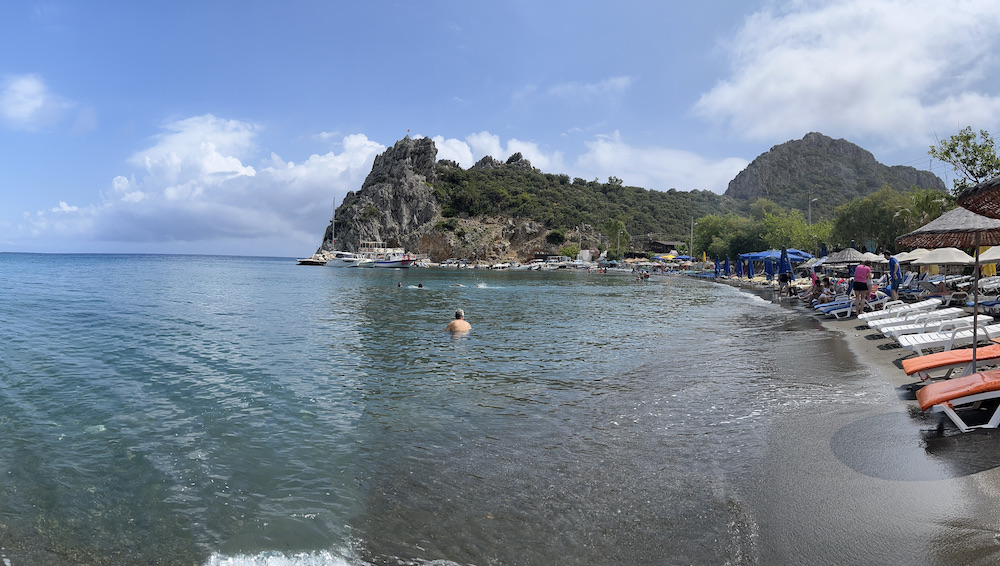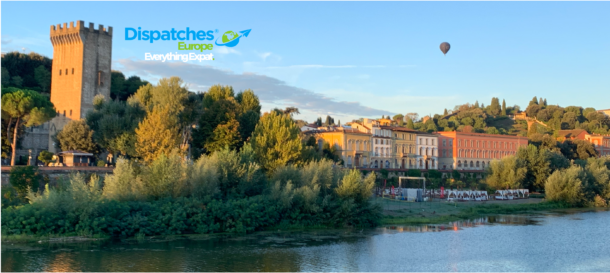Since 2016, Dispatches expat contributors have been writing about their favorite beaches. So it’s high time we curate the best for 2024, which promises to be another sweltering summer.
We at Dispatches are trying to figure out where we’re going, and Turkey is looking like the top candidate after our workation last year along the Aegean and Mediterranean coasts, with the best beaches on the Datça Peninsula off Marmaris.
But there are so many more options including Albania, Croatia, the Greek islands and more exotic destinations such as Corsica and Cyprus. But we have to start somewhere ….
This post will be updated as we island-hop this summer.
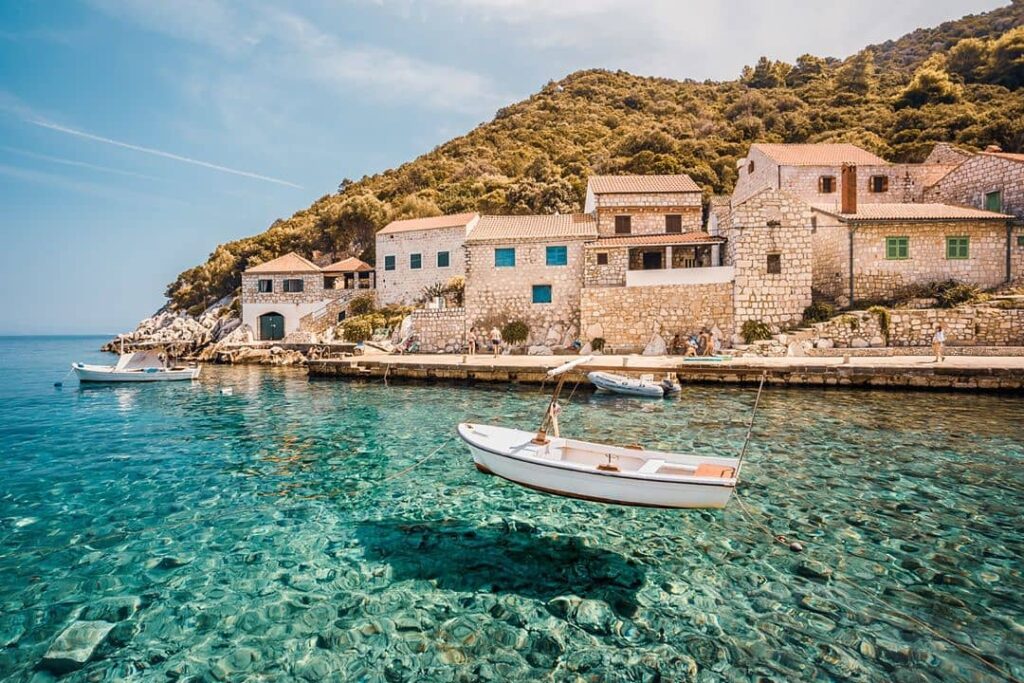
Lastovo
Southern Dalmatia, Croatia
Lastovo, the largest island in the Lastovo archipelago, is one of the most incredible locations in the entire Adriatic Sea. With its steep, rugged coastline, it is one of the most remote permanently inhabited islands and is situated in southern Dalmatia.
This island is the most forested in all of Croatia and nature lovers adore it. It boasts a deep sea, beautiful bays like Skrivena Luka (Hidden harbour) which offer natural protection from Croatia’s pesky Bura wind, and a hilly, karst landscape.
If you’re into getting out into nature, you might want to tackle some of Lastovo’s highest points.
Sozanj provides all those who are up for the challenge with breathtaking views, and Plešivo Brdo and Hum both tower over the sea at more than 400 meters.
If caves are your thing, you won’t be disappointed when on Lastovo. There are five known caves of note on this Croatian island: Pozalica, Puzavica, Medvidina, Grapčeva and Rača, which is the biggest of them all.
– Lauren Simmonds in Zagreb
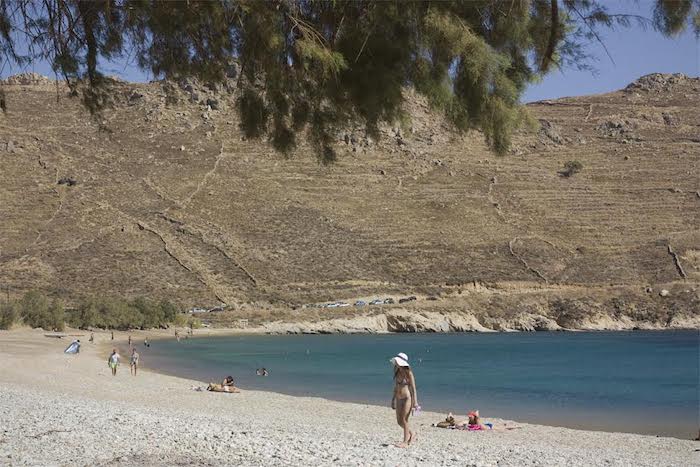
Ganema Beach
Serifos Island, Greece
Serifos is a windy Cycladic island, but it is blessed with beaches all along its perimeter, so you can always find one that works. Ganema offers the perfect serene protection from the northern winds. It is a spectacular bay which is lined with one of my favorite trees, the salt cedar.
The dappled sunlight coming through the branches of a salt cedar creates some magical colors and feelings! The food at the little taverna is mediocre and overpriced but you simply cannot beat this location.
Ganema is one of my all-time favorites!
– Christina Hudson in Athens
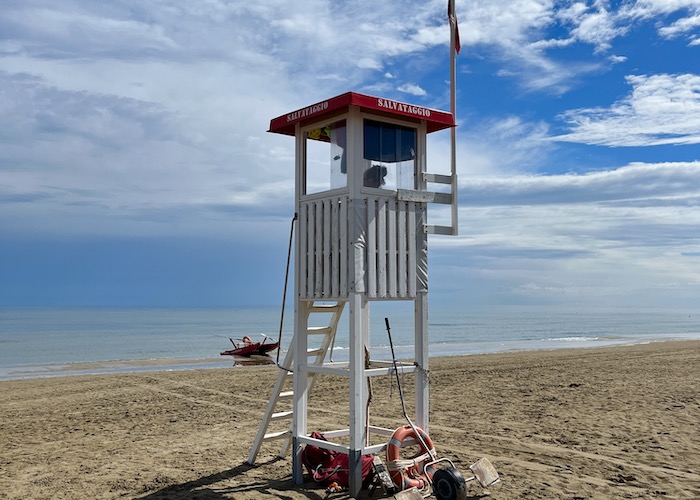
Rimini Beach
Rimini, Italy near San Marino
Rimini is one of Italy’s most popular beach resorts on the Adriatic. Known for its 15-kilometer-long sandy beach and famous nightlife, Rimini attracts all ages, and I wasn’t sure it was really a place I wanted to spend time. (I’m not a lover of crowded beach resorts). Once again, the old adage “Don’t judge a book by its cover” came into play and I found myself enjoying the city.
The sandy beach is a great place for swimming and soaking up the sun. There are plenty of sunbeds and umbrellas, for a price, if you want comfort and shade with a surfeit of beach facilities. The beach is broken into sections; each section having “clubs” with play areas for kids, changing rooms and lockers, showers and snack and beach bars. The beach still had lifeguards during September, so was very safe and the shallow warm water is great for children.
In the late afternoon onwards many of the beach bars have DJ’s and attract a different clientele with vibrant music and great cocktails. There’s nothing more enjoyable than to end the day with a cocktail in your hand and sand between your toes!
– Jackie Harding in the Netherlands
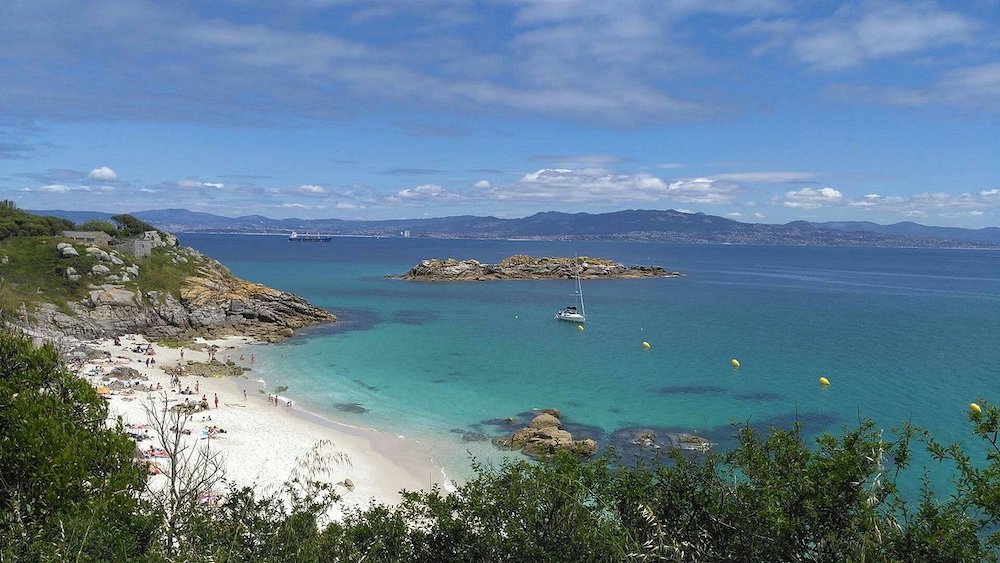
Islas Cies
Galacia, Spain
Islas Cies is an archipelago of three islands, Monteagudo, do Faro (Lighthouse Island) and San Martiño, the southernmost, located off the coast of Pontevedra/Galicia in the mouth of the Ria de Vigo. The most spectacular is a 4,000-feet-long beach of fine, white sand, called Playa de Rodas that connects two islands.
This beach has the clearest water and smooth access which makes is particularly suitable and safe for kids. The archipelago is a nature reserve, so no cars are allowed. It can only be reached in the summer by boat from Vigo or Baiona.
Protection of nature and restriction of tourism are a priority, so there are no rubbish bins on the islands. You have to take your waste back with you. There are plenty of hiking paths clearly indicated, but you are not allowed to stray. Although most visitors come for a day trip, you can also stay overnight at a small camping. Noi other accommodation is available, and you must make your reservation in the port of
Vigo.
Your luggage is transported in a bicycle pulled cart from the marina.
– Inka Piegsa-Quischotte in Spain
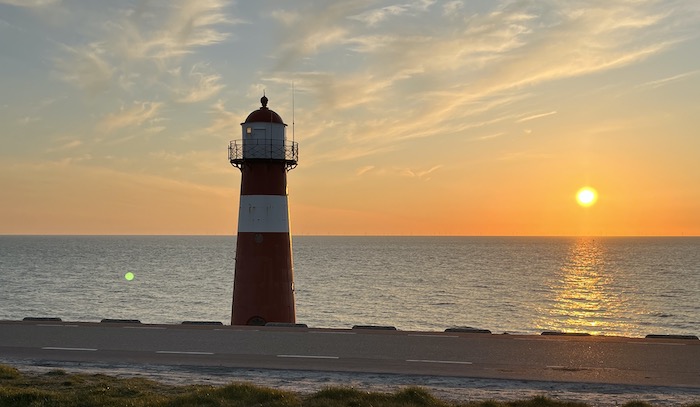
Westkapelle
Zeeland, Netherlands
Dispatches’ co-CEOs finally got to the Dutch coast last year, to Westkapelle on the westernmost tip of Zeeland. This is the coastline between Antwerp and Rotterdam which includes a miles-long sea dike and lighthouses. It’s pretty much perfect – long, long expanses of beaches in this, the Netherlands’ sunniest region. (Okay, this ain’t Greece or Turkey. “Sunny” is relative, and occurs between downpours.)
Compared to Scheveningen or Zandvoort, there’s not much to do here but enjoy the miles of white sand, with only two beach cafés. The town of Westkapelle has restaurants and shops, or you can drive a few kilometers to Middleburg and experience a picturesque small city with a uni vibe and all the restaurants, cafés and boutiques you could ever want.
– Terry Boyd in the Netherlands
Zandvoort
Outside Haarlem, Netherlands
Okay, all the other beaches on this list are places you can relax with a good book while you gaze out over the Med. Zandvoort is not like that. This is a super-popular destination more like nearby Scheveningen in Den Haag. Popular with everyone from families in Haarlem, Amsterdam and Den Haag to anglers to kite surfers.
This is a beach that comes with a town, or a town that comes with a beach. In either case, there are lots of restaurants and shops. Nearby is the Zandvoort Formula 1 track, dunes and easy access to Haarlem, which itself is a great destination.
The flat, sandy beach itself runs literally for miles. There are so many beach bars you could go for days without drawing a sober breath and not regret it. And most like the Hippie Fish and Beach Club Far Out, seem really nice, nicer on average than those at Scheveningen.
– Terry Boyd

Datça Peninsula
outside Marmaris, Turkey
The Datça Peninsula runs west out into the sea from the resort town of Marmaris to the extensive ruins at Knidos. This is a place where the mountains drop into the sea, a place that was lost in time when I first visited back about 2000. The roads are better, but Datça is still waaaaay off the beaten path unless you have a yacht.
Last year, to celebrate Cheryl’s birthday, we drove down the main road through the mountains, then just picked a random road down to the sea and ended up at Hayitbükü Beach. It was the perfect day, with the cove, pristine warm water and pebbly beach mostly to ourselves. On the right side of the cove was a big arch in the mini-mountain with a path. On the left were restaurants and a marina.
We though we’d have to rent beach chairs, but the waiter told us to help ourselves as long as we were ordering. Which we did … cold, tall Efes beers and snacks, and keep ’em comin’.
We ate lunch/dinner at Datça Göl Evi Beach Café (no website), and the food was authentic Turkish village with köfte, fish and salads. Figuring out we were Americans, our teenage waitress smiled as she faked her way through English, only to give up and go with Turkish. But you get that kind of hospitality everywhere, and there coves and beaches to explore all along Datça, which the Turks consider the dividing line between the Aegean Sea to the north, and the Med to the south.
We went in June, which was quiet. But July and August can get a little cray-cray since you’re close to several major cities including Izmir.
– Terry Boyd
–––––––––
Read more about beaches here in Dispatches’ archives.


